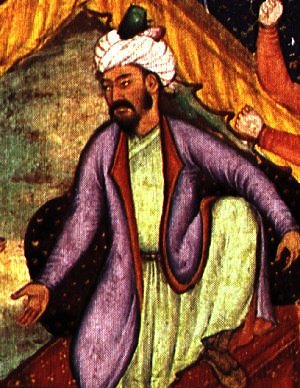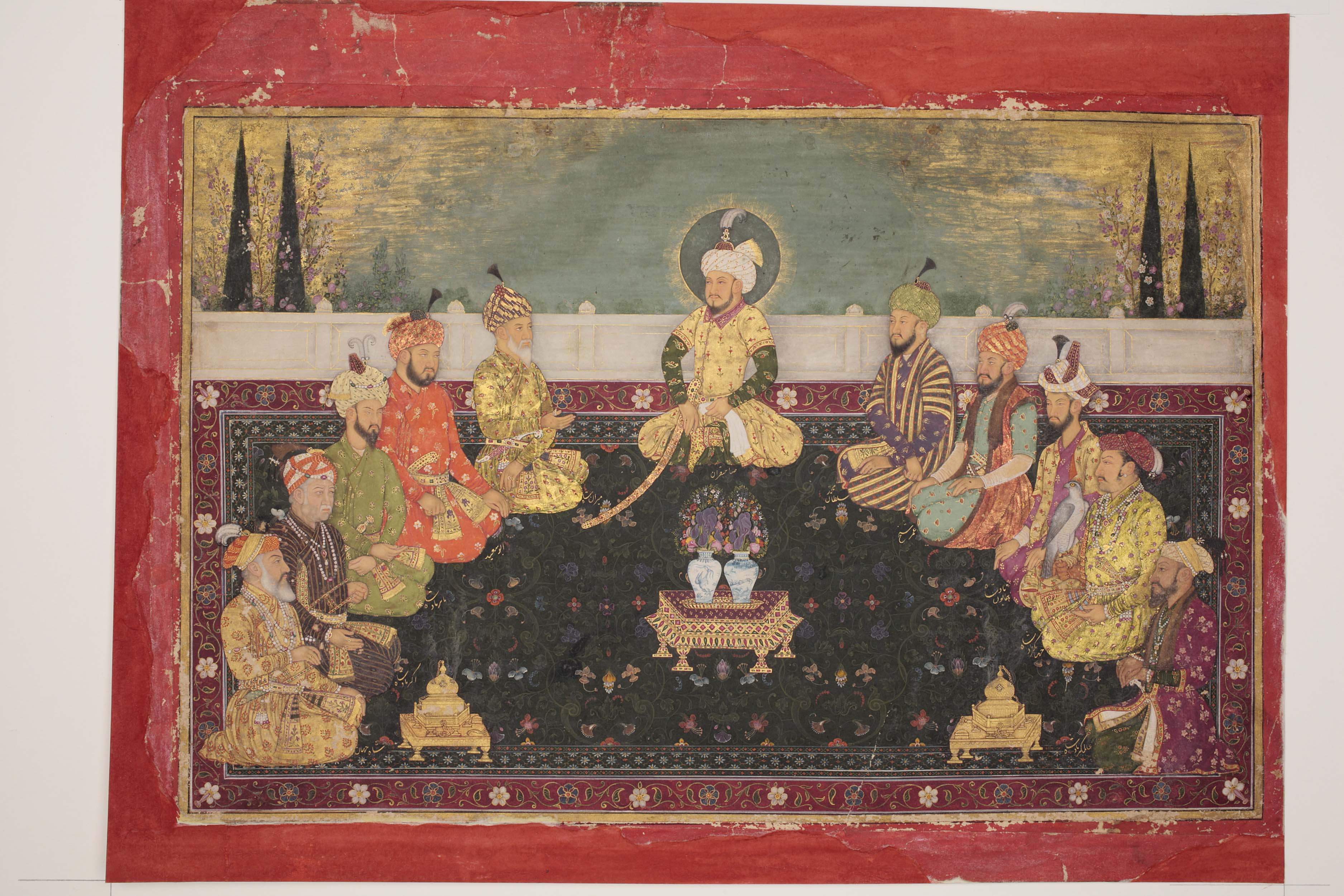|
Barlas Mughals
The Barlas Mughals or Barlas Moghols ( Mongolian: ''Barulās Mogolchuud''; Chagatay/Persian: ''برلاس مغل'') are a Mughal tribe in Pakistan, whose ancestors came from the Barlas Dynasty of Central Asia. The founder of the Mughal empire in South Asia, Zahirudin Babur was from the Barlas tribe of Mongol origin. The two major Barlas Mughal clans in Pakistan use the surnames Mirza and Baig. See also * Babur * Mughal Dynasty * Barlas Dynasty * Mughal people The Mughals (also spelled Moghul or Mogul) are a number of culturally related clans of Indo-Turkic people in North India and Pakistan. They claim they are descended from the various Central Asian Mongolic and Turkic tribes and Persians that se ... References {{reflist Mongol peoples Turkic peoples Mughal clans of Pakistan Ethnic groups in Pakistan Social groups of Pakistan Pakistani people of Mongol descent Pakistani people of Turkic descent Surnames ... [...More Info...] [...Related Items...] OR: [Wikipedia] [Google] [Baidu] |
Mongolian Language
Mongolian is the official language of Mongolia and both the most widely spoken and best-known member of the Mongolic language family. The number of speakers across all its dialects may be 5.2 million, including the vast majority of the residents of Mongolia and many of the ethnic Mongol residents of the Inner Mongolia Autonomous Region of the People's Republic of China.Estimate from Svantesson ''et al.'' (2005): 141. In Mongolia, Khalkha Mongolian is predominant, and is currently written in both Cyrillic and traditional Mongolian script. In Inner Mongolia, the language is dialectally more diverse and is written in the traditional Mongolian script. However, Mongols in both countries often use the Latin script for convenience on the Internet. In the discussion of grammar to follow, the variety of Mongolian treated is the standard written Khalkha formalized in the writing conventions and in grammar as taught in schools, but much of what is to be said is also valid for vernacu ... [...More Info...] [...Related Items...] OR: [Wikipedia] [Google] [Baidu] |
Social Groups Of Pakistan
Social organisms, including human(s), live collectively in interacting populations. This interaction is considered social whether they are aware of it or not, and whether the exchange is voluntary or not. Etymology The word "social" derives from the Latin word ''socii'' ("allies"). It is particularly derived from the Italian ''Socii'' states, historical allies of the Roman Republic (although they rebelled against Rome in the Social War of 91–87 BC). Social theorists In the view of Karl MarxMorrison, Ken. ''Marx, Durkheim, Weber. Formations of modern social thought'', human beings are intrinsically, necessarily and by definition social beings who, beyond being "gregarious creatures", cannot survive and meet their needs other than through social co-operation and association. Their social characteristics are therefore to a large extent an objectively given fact, stamped on them from birth and affirmed by socialization processes; and, according to Marx, in producing and reproduci ... [...More Info...] [...Related Items...] OR: [Wikipedia] [Google] [Baidu] |
Ethnic Groups In Pakistan
Pakistan is a diverse country and the major Pakistani ethnolinguistic groups include Punjabis, Pashtuns, Sindhis, Saraikis, Muhajirs, Balochs, Pothoharis/Paharis and Brahuis, with significant numbers of Kashmiris, Chitralis, Shina, Baltis, Kohistanis, Torwalis, Hazaras, Burusho, Wakhis, Kalash, Siddis and other various minorities. Pakistan's census does not include the 1.4 million citizens of Afghanistan who are temporarily residing in Pakistan. Majority of them were born in Pakistan within the last four decades and are ethnically Pashtuns, Tajiks, Uzbeks and others. Major ethnic groups Punjabis Punjabis are an Indo-Aryan ethnolinguistic group associated with the Punjab region in South Asia. They are the largest ethnic group of Pakistan. Traditionally, Punjabi identity is primarily linguistic, geographical and cultural. Its identity is independent of historical origin or religion and refers to those who reside in the Punjab region or associate with its populati ... [...More Info...] [...Related Items...] OR: [Wikipedia] [Google] [Baidu] |
Mughal Clans Of Pakistan
Mughal or Moghul may refer to: Related to the Mughal Empire * Mughal Empire of South Asia between the 16th and 19th centuries * Mughal dynasty * Mughal emperors * Mughal people, a social group of Central and South Asia * Mughal architecture * Mughlai cuisine * Mughal painting Other uses * Moghulistan in Central Asia ** Moghol people * Moghul, Iran, a village * Mirza Mughal (1817–1857), a Mughal prince * Fiyaz Mughal, founder of Tell MAMA Tell MAMA (Measuring Anti-Muslim Attacks) is a national project which records and measures anti-Muslim incidents in the United Kingdom. It is modelled on the Jewish Community Security Trust (CST) and like the CST it also provides support for v ... See also * Mogul (other) * Mughal-e-Azam (other) {{disambiguation ... [...More Info...] [...Related Items...] OR: [Wikipedia] [Google] [Baidu] |
Turkic Peoples
The Turkic peoples are a collection of diverse ethnic groups of West, Central, East, and North Asia as well as parts of Europe, who speak Turkic languages.. "Turkic peoples, any of various peoples whose members speak languages belonging to the Turkic subfamily...". "The Turkic peoples represent a diverse collection of ethnic groups defined by the Turkic languages." According to historians and linguists, the Proto-Turkic language originated in Central-East Asia region, potentially in Mongolia or Tuva. Initially, Proto-Turkic speakers were potentially both hunter-gatherers and farmers, but later became nomadic pastoralists. Early and medieval Turkic groups exhibited a wide range of both East Asian and West-Eurasian physical appearances and genetic origins, in part through long-term contact with neighboring peoples such as Iranian, Mongolic, Tocharians, Yeniseian people, and others."Some DNA tests point to the Iranian connections of the Ashina and Ashide,133 highlighti ... [...More Info...] [...Related Items...] OR: [Wikipedia] [Google] [Baidu] |
Mongol Peoples
The Mongols ( mn, Монголчууд, , , ; ; russian: Монголы) are an East Asian ethnic group native to Mongolia, Inner Mongolia in China and the Buryatia Republic of the Russian Federation. The Mongols are the principal member of the large family of Mongolic peoples. The Oirats in Western Mongolia as well as the Buryats and Kalmyks of Russia are classified either as distinct ethno-linguistic groups or subgroups of Mongols. The Mongols are bound together by a common heritage and ethnic identity. Their indigenous dialects are collectively known as the Mongolian language. The ancestors of the modern-day Mongols are referred to as Proto-Mongols. Definition Broadly defined, the term includes the Mongols proper (also known as the Khalkha Mongols), Buryats, Oirats, the Kalmyk people and the Southern Mongols. The latter comprises the Abaga Mongols, Abaganar, Aohans, Baarins, Chahars, Eastern Dorbets, Gorlos Mongols, Jalaids, Jaruud, Kharchins, Khishigten, Khorchins ... [...More Info...] [...Related Items...] OR: [Wikipedia] [Google] [Baidu] |
Barlas
The Barlas ( mn, Barulās, script=Latn;Grupper, S. M. ‘A Barulas Family Narrative in the Yuan Shih: Some Neglected Prosopographical and Institutional Sources on Timurid Origins.’ Archivum Eurasiae Medii Aevi 8 (1992–94): 11–97 Chagatay/ fa, برلاس ''Barlās''; also ''Berlās'') were a Mongol and later TurkicizedB.F. Manz, ''The rise and rule of Tamerlan'', Cambridge University Press, Cambridge 1989, p. 28: ''"... We know definitely that the leading clan of the Barlas tribe traced its origin to Qarachar Barlas, head of one of Chaghadai's regiments ... These then were the most prominent members of the Ulus Chaghadai: the old Mongolian tribes — Barlas, Arlat, Soldus and Jalayir ..."''M.S. Asimov & C. E. Bosworth, ''History of Civilizations of Central Asia'', UNESCO Regional Office, 1998, , p. 320: ''"... One of his followers was ..Timur of the Barlas tribe. This Mongol tribe had settled ..in the valley of Kashka Darya, intermingling with the Turkish population ... [...More Info...] [...Related Items...] OR: [Wikipedia] [Google] [Baidu] |
Mughal Dynasty
The Mughal dynasty ( fa, ; ''Dudmân-e Mughal'') comprised the members of the imperial House of Babur ( fa, ; ''Khāndān-e-Āl-e-Bābur''), also known as the Gurkanis ( fa, ; ''Gūrkāniyān''), who ruled the Mughal Empire from to 1857. The Mughals originated as a Central Asian branch of the Timurid dynasty, supplemented with extra Borjigin (the clan which ruled the Mongol Empire and its successor states) bloodlines. The dynasty's founder, Babur (born 1483), was a direct descendant of the Asian conqueror Timur (1336–1405) on his father's side and of Mongol emperor Genghis Khan (died 1227) on his mother's side, and Babur's ancestors had other affiliations with Genghisids through marriage and common ancestry. The term "Mughal" is itself a derivative form of "Mongol" in the Arabic and Persian languages: it emphasised the Mongol origins of the Mughal dynasty. During much of the Empire's history, the emperor functioned as the absolute head of state, head of government and ... [...More Info...] [...Related Items...] OR: [Wikipedia] [Google] [Baidu] |
Babur
Babur ( fa, , lit= tiger, translit= Bābur; ; 14 February 148326 December 1530), born Mīrzā Zahīr ud-Dīn Muhammad, was the founder of the Mughal Empire in the Indian subcontinent. He was a descendant of Timur and Genghis Khan through his father and mother respectively.F. LehmannẒahīr-al-Dīn Moḥammad Bābor In Encyclopædia Iranica. Online Ed. December 1988 (updated August 2011). "Bābor, Ẓahīr-al-Dīn Moḥammad son of Umar Sheikh Mirza, (6 Moḥarram 886-6 Jomādā I 937/14 February 1483 – 26 December 1530), Timurid prince, military genius, and literary craftsman who escaped the bloody political arena of his Central Asian birthplace to found the Mughal Empire in India. His origin, milieu, training, and education were steeped in Muslim culture and so Bābor played significant role for the fostering of this culture by his descendants, the Mughals of India, and for the expansion of Islam in the Indian subcontinent, with brilliant literary, artistic, and hi ... [...More Info...] [...Related Items...] OR: [Wikipedia] [Google] [Baidu] |
Kamangars
The Khan Mughals or Kamangars ( Mongolian: ''Kamangaruud''; Urdu/Persian: ''کمنگرز'') are a tribe of the Barlas Mughal people of Turko-Mongol descent. They are primarily found in the Mirpur, Kotli, Pooch and Bagh districts of Azad Jammu and Kashmir, Pakistan, particularly near the mountains of Pir Panjal Range. The Khan Mughals speak Hindko and Pahari/Pothwari languages and are predominantly Muslims. They traditionally assert descent from the Barlas tribe of the Chaghatai Mughal Turks who conquered the Indian subcontinent. Their ancestors initially spoke Persian and Chaghatai Turkic, although Urdu, Hindko, Pahari, and Kashmiri are contemporarily the most prevalent native tongues. The renowned Dhaka Nawab dynasty and Comilla Munshibari dynasty averred descent from the Khan Mughal clans of Iranian Azerbaijan. Etymology The word Kamangar is derived from Kaman Gar which means bow-maker in the Persian. As a community, they are in essence village artisans, w ... [...More Info...] [...Related Items...] OR: [Wikipedia] [Google] [Baidu] |






